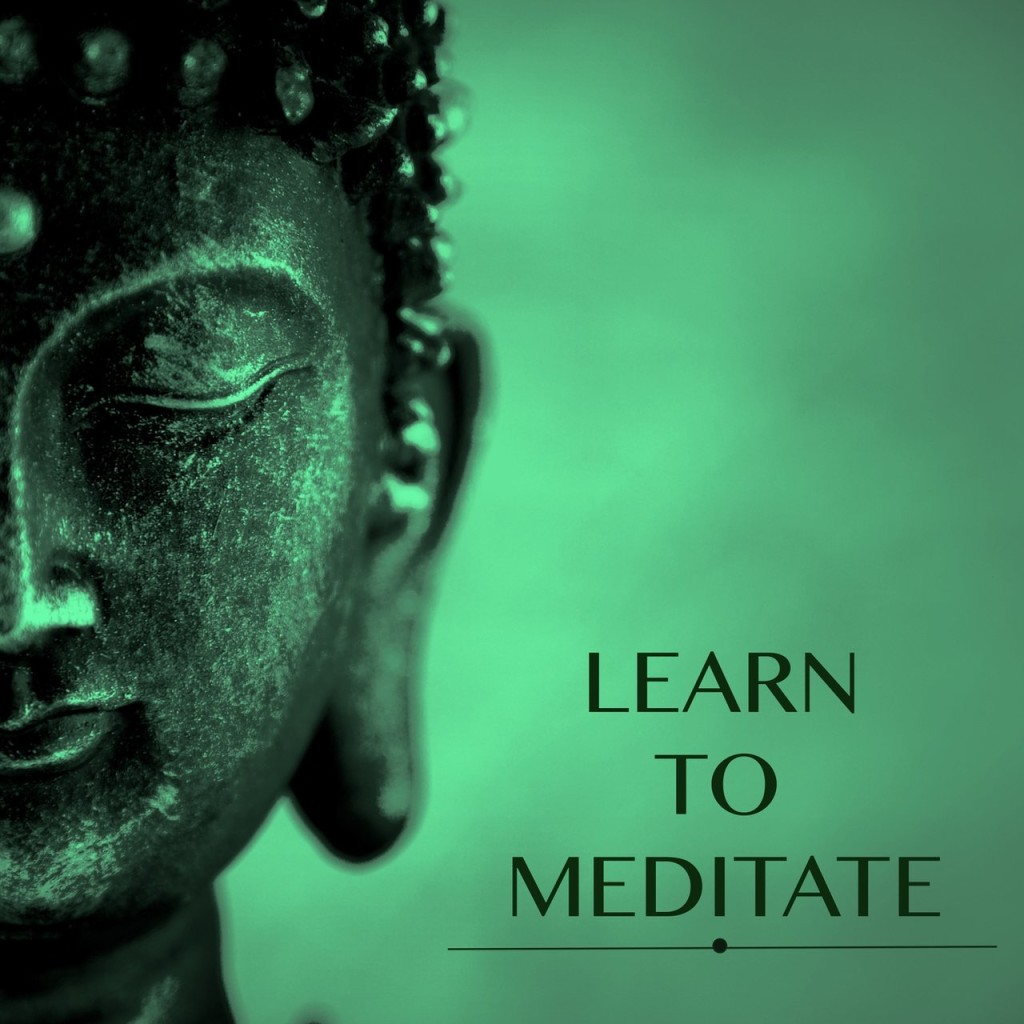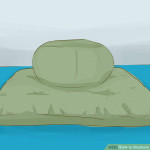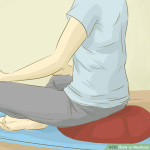How to Meditate for Beginners
The benefits of meditating are much touted by those already undertaking daily or regular meditation. People have different reasons for wanting to meditate: quelling the internal chatter, getting to know oneself better, finding calm and a sense of grounding, enforced restful contemplation, or tying it to one’s faith. Whatever your reason for wanting to meditate, it can be daunting to know how to begin and how to stay motivated.

Part 1: Preparing for Meditation
- Think about what you want to achieve with your meditation. People come to meditation for a wide range of reasons — whether to improve their creativity, help visualize a goal, quiet their inner chatter, or make a spiritual connection. If your only goal is to spend a few minutes every day being present in your body without worrying about everything you have to do, that’s reason enough to meditate. Try not to over-complicate your reasons for meditating. At its core, meditation is just about relaxing and refusing to be caught up in everyday anxieties.

2. Find a distraction-free area. Especially when you’re just starting out, it’s important to clear your environment of distracting sensations. Turn off the TV and radio, close your windows against the street sounds outside, and close your door to noisy roommates. If you share your home with roommates or family members, you may find it difficult to find a quiet space where you can focus on meditation. Ask the people you live with if they would be willing to keep quiet for the duration of your meditation exercise. Promise to come tell them as soon as you’re finished, so they can resume their normal activities.

- A scented candle, a bouquet of flowers, or incense can be great little touches to enhance your meditation experience.
- Dim or turn out the lights to help you concentrate.
3. Use a meditation cushion. Meditation cushions are also known as zafus. A zafu is a circular cushion that allows you to sit on the ground while meditating. Because it does not have a back, like a chair does, it doesn’t let you slump back and lose focus on your energy. If you don’t have a zafu, any old pillow or sofa cushion will do to keep you from getting sore during long stretches of cross-legged sitting.

- If you find that sitting without a chair-back hurts your back, feel free to use a chair. Try to be present in your body and maintain a straight back for as long as it feels comfortable, then lean back until you feel you can do it again.
4. Wear comfortable clothes. You don’t want anything to pull you out of your meditative thinking, so avoid restrictive clothing that might pull on you, like jeans or tight pants. Think about what you might wear to exercise or to sleep in — those types of loose, breathable clothes are your best bet.

5. Choose a time when you’re comfortable. When you’re more familiar with meditation, you might use it to calm you down when you’re feeling anxious or overwhelmed. But if you’re a beginner, you may find it hard to concentrate at first if you’re not in the right frame of mind. When you’re starting out, meditate when you already feel relaxed — perhaps first thing in the morning, or after you’ve had to unwind after school or work.

- Remove every distraction you can think of before you sit down to meditate. Grab a light snack if you’re feeling hungry, use the restroom if you need to, and so on.
6. Have a timer at hand. You want to ensure you practice your meditation for long enough, but you also don’t want to break your concentration by checking the time. Set a timer for the length of time you wish to meditate — whether 10 minutes or an hour. Your phone may have a built-in timer on it, or you can find many websites and apps that will time your sessions for you.

Part 2: Meditating
1. Sit on your cushion or chair with a straight back. The upright posture helps you to concentrate on your breathing as you purposefully inhale and exhale. If you’re sitting in a chair with a back, try not to lean back against it or slouch. Stay as erect as possible.

- Position your legs in whichever manner is comfortable to you. You can extend them out in front of you or cross them beneath you like a pretzel if you’re using a cushion on the ground. The most important thing is that your posture remains straight.
2. Don’t fret about what to do with your hands. In the media, we often see people holding their hands at their knees when meditating, but if that’s uncomfortable for you, don’t worry about it. You can fold them in your lap, let them hang at your sides — whatever allows you to clear your mind and concentrate on your breathing.

3. Tilt your chin as though you’re looking downward. It doesn’t matter if your eyes are opened or closed when you meditate, though many people find it easier to block out visual distractions with closed eyes. Either way, tilting your head as though you’re looking down helps open up the chest and ease your breathing.

4. Set your timer. When you’re in a comfortable position and are ready to get started, set your timer for however long you’d like to meditate. Don’t feel any pressure to reach an hour-long transcendental state during your first week. Start small with 3-5 minute sessions, and work your way up to half an hour, or even longer if you’d like.

5. Keep your mouth closed as you breathe. You should both inhale and exhale through your nose when meditating. However, make sure your jaw muscles are relaxed, even though your mouth is closed. Don’t clench your jaws or grind your teeth; simply relax.

6. Focus on your breathing. This is what meditation’s all about. Instead of trying notto think about the things that might stress you out on a day-to-day basis, give yourself something positive to focus on: your breath. By focusing all of your concentrating on your inhalations and exhalations, you’ll find that all other thoughts from the outside world fall away on their own, without you having to worry about how to ignore them.

- Concentrate on your breathing in the way that’s most comfortable for you. Some people like to focus on how the lungs expand and contract, while others like to think about how air passes through the nose when they breathe.
- You might even focus on the sound of your breathing. Just bring yourself to a state of mind where you’re solely focused on some aspect of your breath.
7. Observe your breath, but don’t analyze it. The goal is to be present within each breath, not to be able to describe it. Don’t worry about remembering what you’re feeling, or being able to explain the experience at a later time. Just experience each breath in the moment. When it passes, experience the next breath. Try not to think about the breathing with your mind – just experience it through your senses.

8. Bring your attention back to your breath if it wanders. Even when you’ve gained a lot of experience with meditation, you’ll find that your thoughts might wander. You’ll start thinking about work or bills or the errands you have to run later. Whenever you notice the outside world creeping in, don’t panic and try to ignore them. Instead, gently nudge your focus back to the sensation of your breath in your body, and let other thoughts fall away again.

- You may find it easier to maintain your focus on inhalations than on exhalations. Keep this in mind if you find it to be true. Try to concentrate especially on the feeling of your breath as it leaves your body.
- Try counting your breaths if you’re having trouble refocusing your attention.
9. Don’t be too hard on yourself. Accept that focus will be hard for you when you’re just starting out. Don’t berate yourself––all beginners experience the inner chatter. In fact, some would say that this continual return to the present moment is the “practice” of meditation. Furthermore, don’t expect your meditation practice to change your life overnight. Mindfulness takes time to exert its influence. Keep coming back to meditation every day for at least a few minutes, lengthening your sessions when possible.

Tips
- Make sure that your cellphone is set to silent.
- Meditating before bed will help your brain start shutting down and will make you feel more relaxed.
- Meditation is not a one shot magic solution but a continuous process. Keep practicing everyday and you will gradually realize a state of calmness and peace developing within you.
- Listening to smooth music helps you relax better.
- Focusing on your breath or chanting a mantra like OM is common, but if you prefer listening to music while meditating, only listen to calm songs. A song could be calming at first but then change into rock in the middle––this is not appropriate, as it interrupts the meditating process.
- Frustration comes with the territory. Roll with it––it’s teaching you as much about yourself as the more peaceful side of meditation. Let go and become one with the universe.


